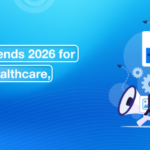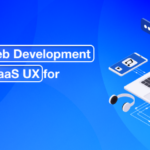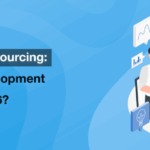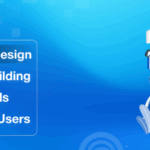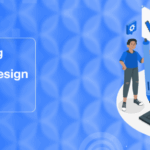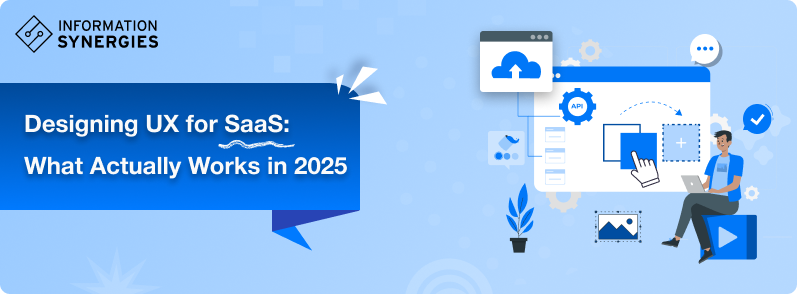
SaaS products will face increasingly fierce competition in 2025. A smooth and quick UI/UX is no longer an optional feature; it is synonymous with success. Great SaaS web design is about anticipating user behavior, eliminating any possible friction, and helping users accomplish their goals in the most efficient way possible.
Whether launching a brand-new software or upgrading an existing one, strategic web design and development greatly favor adoption, retention, and conversion. SaaS is mostly cloud-based today, so creating a flawless UX design for web interfaces has become essential. A good product by itself is no longer enough, and a seamless, engaging, and purposeful user experience has to come alongside.
In this article, we talk about core design principles, tools, and real-use UX methods that are working for SaaS in the year 2025
Why UX Matters More Than Ever in SaaS
User expectations are high, set almost sky-high! They don’t want beginner tutorials; they want intuitive design. They don’t want to search through menus; they seek crystal-clear navigation. So, web page design and development must be molded according to the modern-day speed, clarity, and convenience paradigm.
Modern SaaS buyers usually try before they buy. This self-service setup only works if the very first click is an easy-to-understand one by itself. Here is how superb UI/UX directly stimulates growth:
- Better user onboarding = faster activation
- Cleaner navigation = higher engagement
- Seamless web interactions = improved customer satisfaction
Companies that consider website development as part of their UX strategy enjoy several advantages in metrics ranging from churn rate to NPS (Net Promoter Score). It’s not only about looks anymore; it’s about effectiveness, flow, and empathy.
Key UX Design Principles That Work in 2025
Minimalism with Purpose
Today’s best website design out there for SaaS embraces minimalism. A spotless interface, never cold. Every element, be it text, icon, or button, exists for a purpose. Users don’t have any time to interpret; hence, they expect clarity at every turn.
Essentially, keeping things minimal also does well in visually reducing clutter, especially on dashboards. So, this trend achieves the goals passed onto it via web design and development, and, under that, also aids better SEM because distraction-free pages load faster and do better at ranking and conversion.
Effortless, Guided Onboarding
First impressions matter. The gateway to the entrance of a user journey in a SaaS is the onboarding experience. An interactive checklist, progress indicator, and contextual tooltips plus modals should all be at the disposal of any good UX designer.
In 2025, top SaaS companies would essentially be tweaking the onboarding engineering on every internet page to consider user intent and industry so that users Value Faster with Less Friction.
Microinteractions That Guide Behavior
Said animations and vignette-like cues, entirely were subtle hover states, toggles, or confirmation checkmarks- are UX gold. These details form your microinteractions that signal the system is responding and give users a sense of control.
SaaS interfaces that include these details are more engaging and intuitive, increasing user satisfaction without adding complexity to website development.
Inclusive, Accessible Design
Accessibility is no longer a choice. A modern-day website design must be usable by all, including users with visual, motor, or cognitive disabilities. Whereas adoption of the WCAG (Web Content Accessibility Guidelines) and designing for assistive technologies is just an ethical responsibility, it is a smart business move as well.
A design philosophy for inclusivity also assures performance can adapt along a myriad of devices, screen sizes, and demographics, reasonable proof that good web design and development benefits everybody.
Data-Driven Decision Making
In the past, design decisions were based on assumptions. Today, the SaaS firms gather UX data from heatmaps, user recordings, and A/B testing. Behavioural insights inform teams in refining layouts, reducing bounce rate, and making conversions.
By tying website development processes to actual usage data, businesses can iterate faster and build user flows that reflect how people use the product.
SaaS-Specific UX Strategies That Deliver in 2025
Customized Dashboards by User Role
Generic layouts are passé. Now, SaaS firms provide dashboards tailored to the user type, goal, or job function. A marketer needs different information from an engineer or C-suite exec, and your UI/UX should uphold that contrast.
Customizing dashboards with good web page design and development will let the user accomplish his/her tasks faster, lowering user queries to support while elevating user satisfaction.
Smooth Integration Journeys
Most SaaS apps never actually work in isolation these days. Whether you are integrating CRMs, analytics, or payment platforms, users demand an express and easy integration.
Any clunky API setup or any hidden integration steps will be a complete turnoff for them. Good integration flows convey visual cues, sandbox testing environments, and status indicators while building user trust and improving usability-even for non-technical users. The best web development companies are now building integrations as part of the onboarding flow.
Nudges, Prompts & Lifecycle Hints
The best way to bring users back is with timely reminders and helpful nudges based on user behavior. For instance, if someone hasn’t finished setting up, a prompt or pop-up can nudge them back.
This keeps your UI/UX supportive without being aggressive, helping in customer retention and the realization of value in the long term.
UX Mistakes SaaS Companies Should Avoid
Even in 2025, some pitfalls remain common:
- Overly Complex Navigation: Users leave a system if they cannot find a product or service within several seconds. Flatten the navigation. Use a consistent label. Do not feature overload.
- Mobile-Neglect: Many SaaS users, particularly SMBs, consider mobile devices or tablets an option to access tools. If you do not offer a responsive design or a mobile-friendly approach, you witness a limitation to your reach.
- Inconsistent Visual Language: Different button styles, colors, or fonts may confuse the user. Cohesive visual systems provide clarity and assurance.
- Ignoring Feedback Loops: Not capturing user feedback before updating your systems means lost insight into growth avenues.
Learn More: Why UX/UI Design Matters for Businesses
Final Thoughts: UX Is the Heartbeat of SaaS Success
As technology advances, users become more sophisticated—and less forgiving. Good UI/UX is no longer optional; it’s foundational to scaling a SaaS product. The choices you make in website design, web development, and overall web page design and development directly impact user perception and business outcomes.
In 2025, winning SaaS companies are the ones that combine data, empathy, and design thinking. They don’t just deliver features—they deliver experiences. From the first interaction to daily workflows, every click must feel seamless.
Contact us to invest in user-first digital solutions—because your users won’t wait for you to catch up. Discover how Information Synergies, LLC can help.
